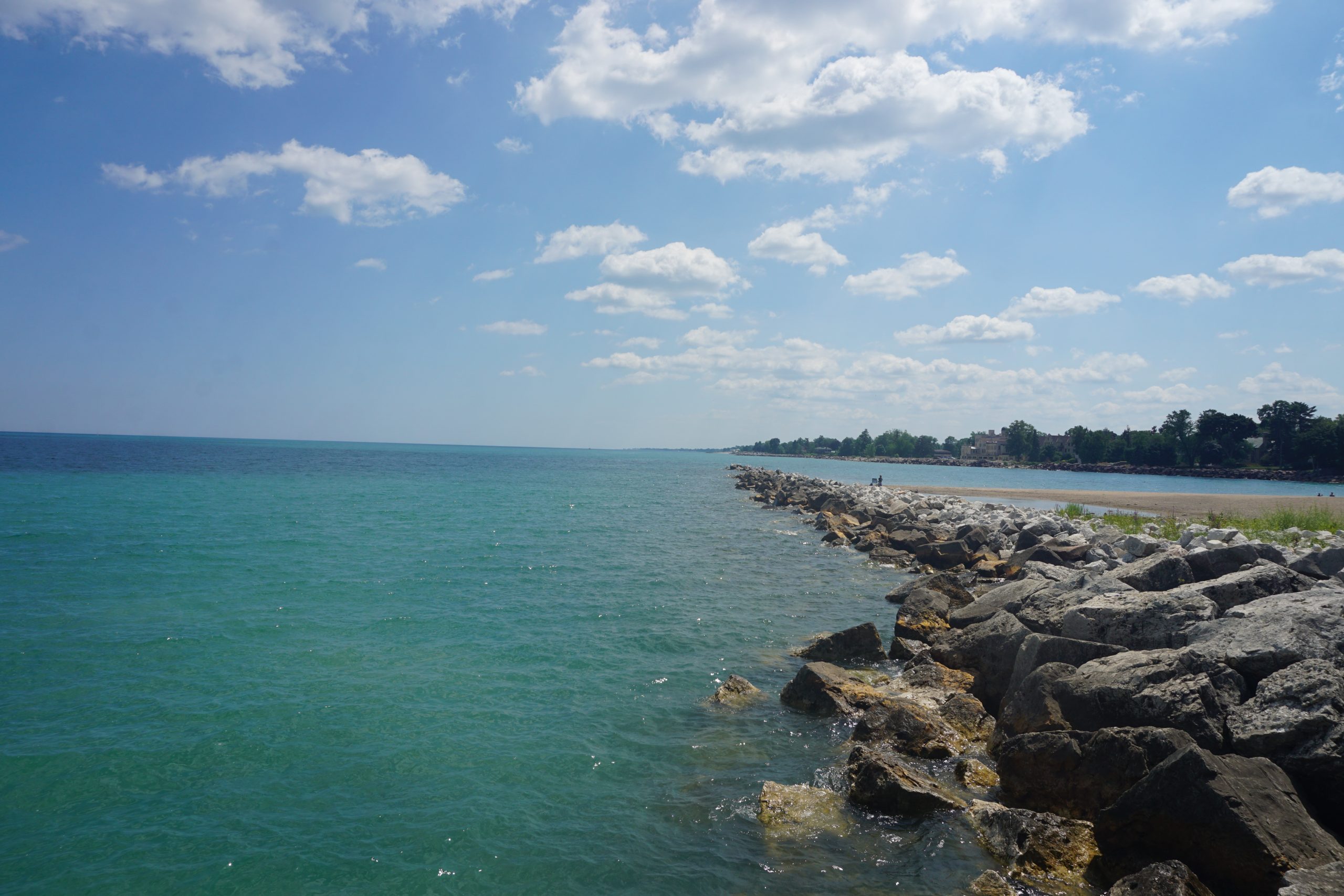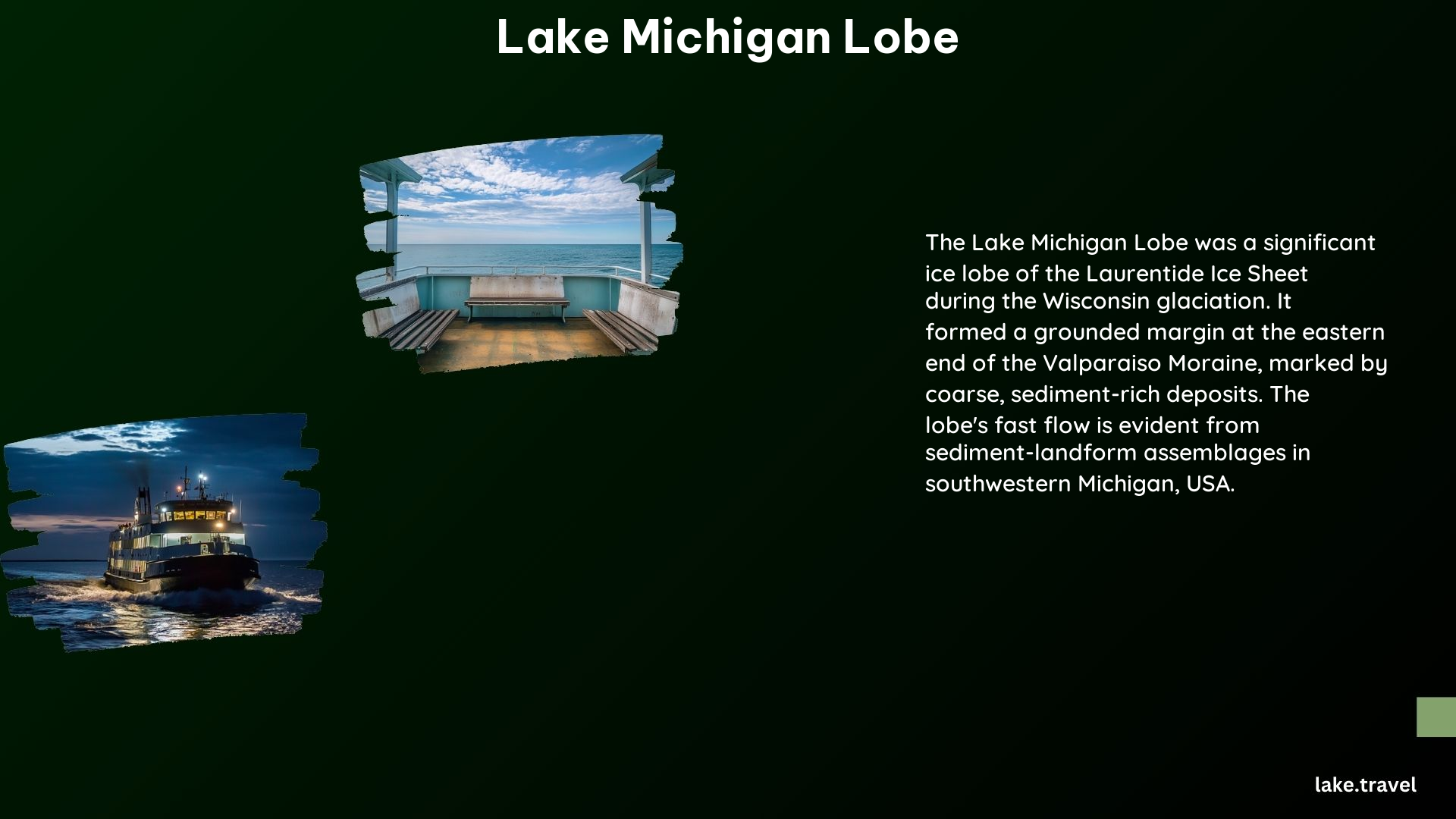The Lake Michigan Lobe is a remarkable geological feature that has captivated the attention of scientists and outdoor enthusiasts alike. Formed during the last ice age, this lobe of the Laurentide Ice Sheet has left an indelible mark on the landscape, shaping the Great Lakes region and creating a unique and diverse ecosystem.
Surface Area and Depth

The Lake Michigan Lobe covers an impressive surface area of approximately 22,400 square miles (58,000 square kilometers), making it a significant geological feature. The average depth of Lake Michigan, which is closely tied to the Lake Michigan Lobe, is around 279 feet (85 meters), adding to the lobe’s impressive scale.
Retention and Replacement Time

The retention or replacement time of Lake Michigan, which is influenced by the Lake Michigan Lobe, is approximately 99 years. This means that it takes about 99 years for the water in Lake Michigan to be completely replaced, highlighting the lobe’s role in maintaining the lake’s delicate ecosystem.
Formation and Chronology
The Lake Michigan Lobe was formed during the Wisconsin stage of glaciation, which occurred from about 25,000 to 10,000 years ago. A revised chronological framework for the deglaciation of the Lake Michigan Lobe has been presented based on radiocarbon dating, providing a detailed timeline for the lobe’s formation and retreat.
Distinctive Features
The Lake Michigan Lobe has several distinct features that make it a unique geological marvel. These include the Mackinac Channel, a subaerial river channel that drained Lake Chippewa, and a drowned delta lying at depths of 50 to 60 meters east of Washington Island. Additionally, a large drowned river channel leads upstream from this delta, across the floor of Green Bay and into Little Bay De Noc.
Geomorphology
The geomorphology of the Lake Michigan Lobe is characterized by a series of distinct N-S trending ridges and valleys in the islands area of northern Lake Michigan. This topography has the highest local relief of any in Lake Michigan, exceeding 180 meters in places, creating a diverse and visually stunning landscape.
Sediment-Landform Assemblages
Studies have shown that the Lake Michigan Lobe formed a grounded margin at the eastern end of the Valparaiso Moraine, marked by coarse, sediment-landform assemblages in southwestern Michigan, USA. These unique geological features provide valuable insights into the lobe’s formation and evolution.
Ecological Significance
The Lake Michigan Lobe has played a crucial role in shaping the ecological landscape of the Great Lakes region. The diverse topography and unique geological features created by the lobe have contributed to the development of a rich and varied ecosystem, supporting a wide range of plant and animal life.
Recreational Opportunities
The Lake Michigan Lobe’s captivating features have made it a popular destination for outdoor enthusiasts and nature lovers. From hiking and camping in the scenic ridges and valleys to water-based activities like boating, fishing, and swimming, the lobe offers a wealth of recreational opportunities for visitors to explore and enjoy.
Conclusion
The Lake Michigan Lobe is a remarkable geological feature that has left an indelible mark on the Great Lakes region. Its impressive surface area, depth, and retention time, as well as its distinctive features and geomorphology, have made it a fascinating subject of study for scientists and a beloved destination for outdoor enthusiasts. As we continue to explore and appreciate the wonders of the natural world, the Lake Michigan Lobe stands as a testament to the power and beauty of the Earth’s geological processes.
References:
– https://www.ngdc.noaa.gov/mgg/greatlakes/lakemich_cdrom/html/geomorph.htm
– https://countycat.mcfls.org/Record/.b39783996?searchId=3360838&recordIndex=4&page=
– https://project.geo.msu.edu/geogmich/lobes.html
– https://pubs.usgs.gov/publication/70034704
– https://www.sciencedirect.com/science/article/pii/S0277379105001605
